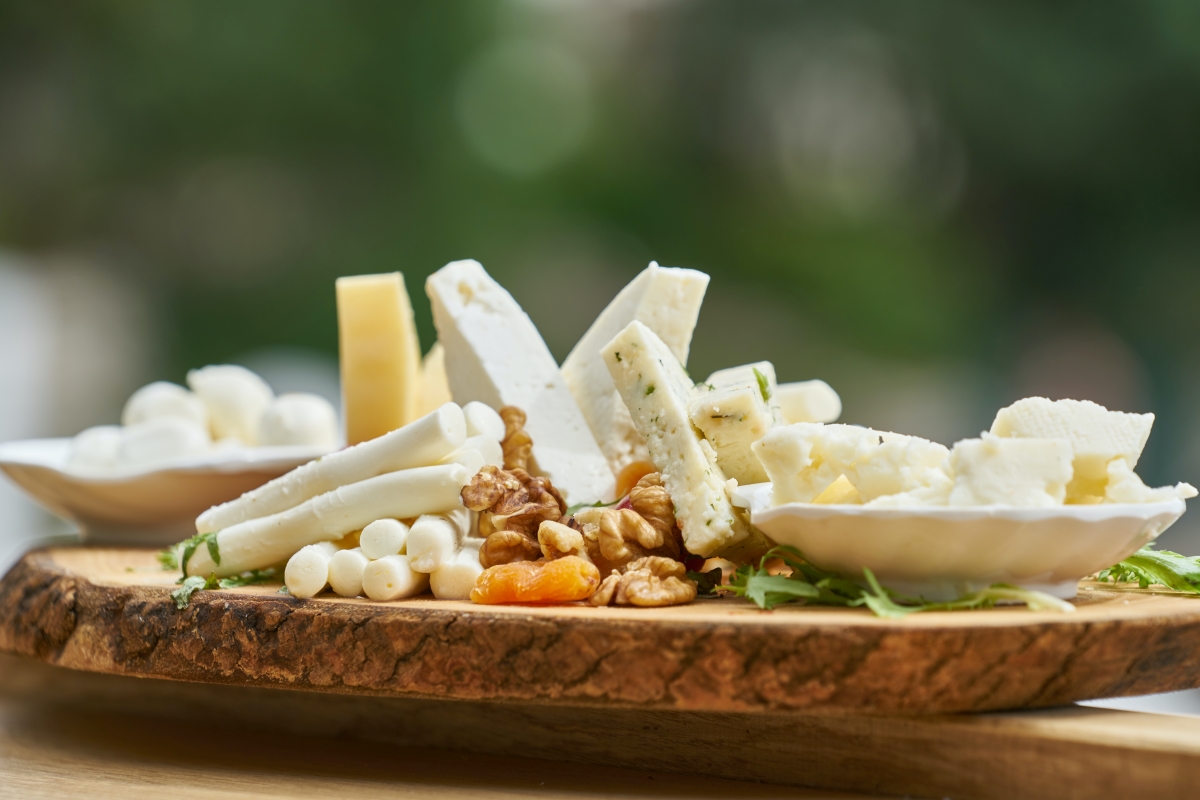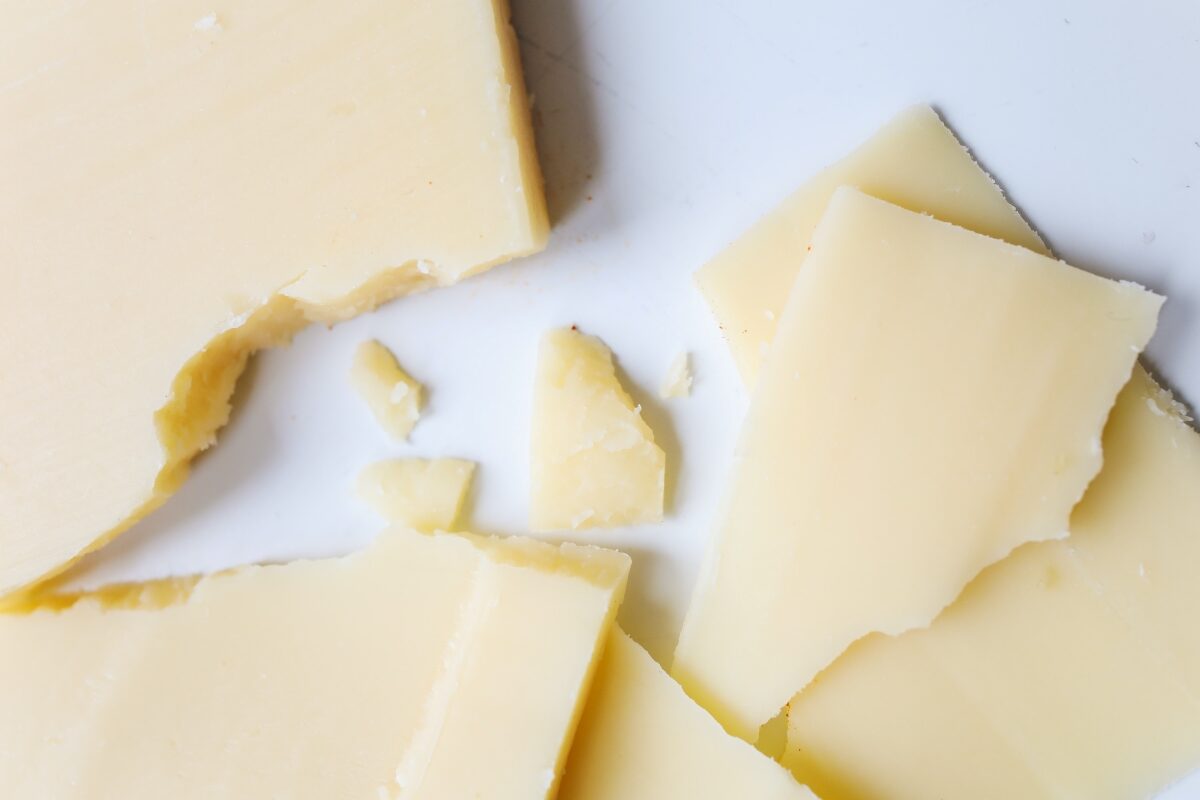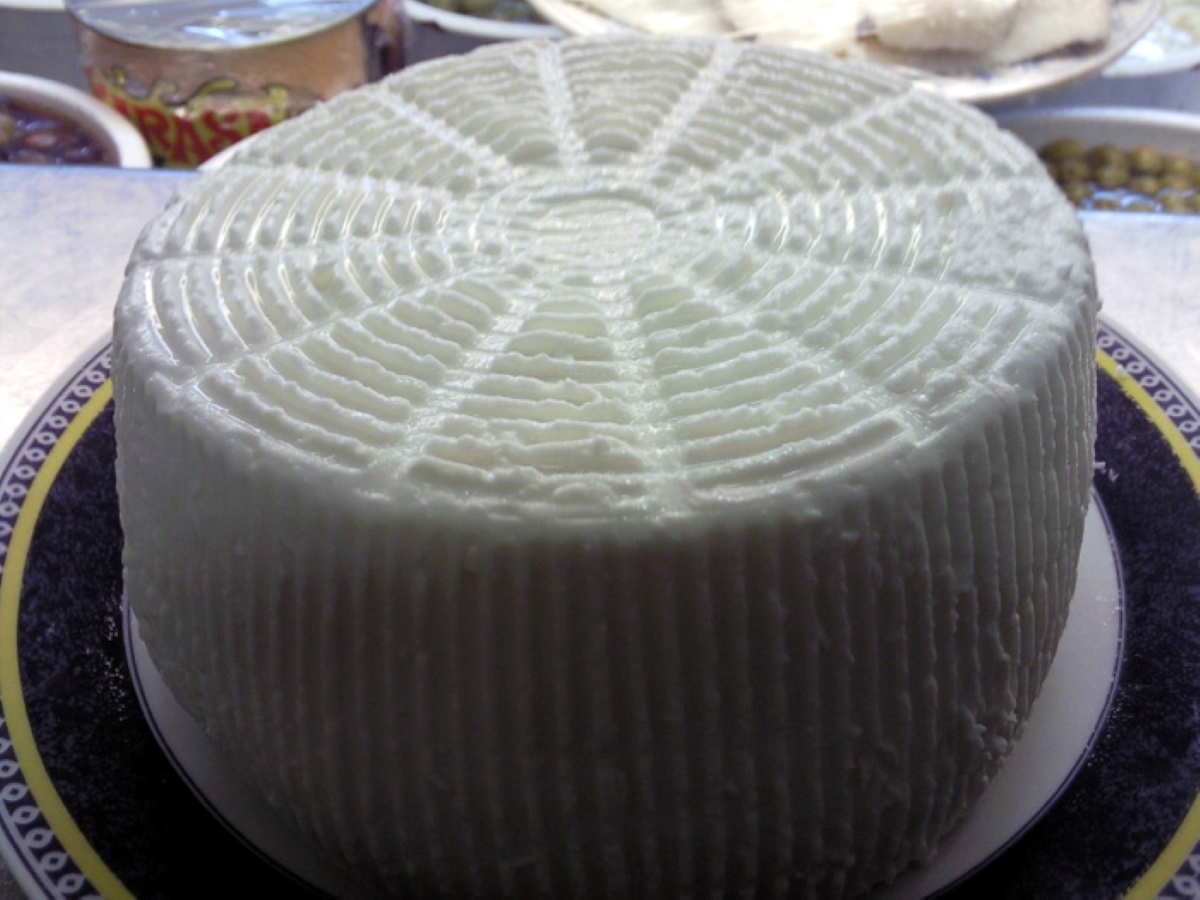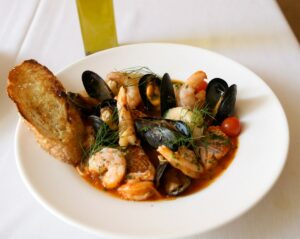Last Updated on January 4, 2023 by | Published: December 30, 2022
When you get a basic overview of Italian food, you’ll quickly realize how regional the cuisine is. So regional that one dish can change in subtle yet meaningful ways between neighboring towns, let alone entire regions. So, when a cheese connoisseur headed for Tuscany starts looking into what uniquely Tuscan cheeses they should try, they won’t be surprised to learn that there are regional cheese differences even between towns and provinces within Tuscany.

Cheesemaking in what is now Tuscany dates to the Etruscan era. And sheep’s milk cheese dominates the region. Sheep farms are common throughout the countryside. The differences between the various sheep’s milk cheeses made in Tuscany come from things like what the sheep eat and how long (and in what container) the cheeses are aged.
A couple of Tuscany’s most famous cheeses are likely to be familiar names to you. Though there are undoubtedly versions of each that you won’t have tasted before. And then there are the countless kinds of cheese that will be completely new. Simply because they rarely get exported beyond their home region.
Some Initial Tips
When you’re browsing the cheese stall at a Tuscan farmer’s market, note that the word “stagionato” means “seasoned,” or “aged,” and the word “fresco” means fresh. Wheels of aged cheese are sometimes labeled with details about the aging process, such as “stagionato sotto cenere” (seasoned under ash). If you’re comfortable chatting with the person behind the counter, you can ask for cheese recommendations—just be prepared to talk about what you plan to do with the cheese. A knowledgeable cheesemonger will be able to point you in the direction of exactly the right cheese based on what you’ll eat it with or how you’ll use it in a recipe.
There’s an extremely long list of Tuscan cheeses, so consider this collection below the tip of the proverbial iceberg. It will definitely get you started and should provide a delicious foundation for whatever cheesy delights come next.

Pecorino
Since Tuscany is the land of sheep’s milk cheese, it’s no surprise that its most prized cheese takes its name from the wooly animals—pecorino comes from the word “pecora,” which means “sheep.”
Pecorino is most often a hard cheese, typically aged from 8-12 months, and it’s a popular option on cheese plates both before and after meals. It’s known for its salty and nutty flavor and those fabulous cheese crystals. There is a fresh option, in which the cheese is aged only a few weeks, but it’s not as widespread throughout the region.
Pecorino’s history dates back to at least Ancient Rome, and the Etruscans made some kind of sheep’s milk cheese, too. Today, the pinnacle of Tuscan pecorino is the one with the coveted European stamp of quality and location: pecorino Toscano DOP.
There are so many regional varieties of pecorino within Tuscany, though, each one a little different, that it might be more accurate to call pecorino a family of cheeses.

Pecorino di Pienza
There’s pecorino di Pienza, made in the area around (you guessed it) Pienza and nearby Montepulciano. This one is only aged for a relatively short 1-5 months, so it’s still on the softer side of hard cheese, and the rind is sometimes rubbed in ash or tomatoes. Some of Pienza’s pecorino gets aged in oak barrels and will be labeled “pecorino di Pienza stagionato in barriques.” Sometimes, walnuts or black truffles are incorporated into the cheese itself.
Pecorino Baccellone
In the area around Lucca, you’ll find another variety called pecorino baccellone. This is one of the freshest kinds of pecorino you can get — it’s usually less than a week old by the time it goes to market, and can be eaten like any other soft cheese.
In Siena, pecorino is often wrapped in leaves from walnut trees and then aged in clay jars (pecorino stagionato con foglie di noci), while cheese makers in Montepulciano wrap their pecorino in cotton and age it in the crevices found in the porous volcanic rock surrounding the city (fossa del greppo pecorino).

Ricotta
If you’ve ever made lasagne, you’re familiar with the word ricotta. It’s made in several Italian regions, and in several parts of Tuscany. Ricotta can be made with milk from cows, goats, even water buffalos—but in Tuscany, as you might expect, it’s made with sheep’s milk. You can find ricotta cheese makers around Siena, Pistoia, in the coastal Maremma area, and around Monte Amiata in the southern part of the region.
Ricotta is a whey cheese, made by cooking the whey twice (the word literally means “recooked” in Italian) with a fermentation period in between. The most common form is fresh ricotta, which is soft and spreadable and can resemble the texture of cottage cheese. There are also some versions of ricotta that are aged, but the ones made in Tuscany are primarily fresh.
The mild, super-soft, spreadable fresh cheese is frequently used to fill stuffed pasta like ravioli or layer into the aforementioned lasagne. The delicate flavor also lends itself well to desserts—it makes a fluffy cheesecake and it’s a common filling for Sicily’s beloved cannoli. And, since it doesn’t require a finicky aging process, ricotta is actually one you can make at home if you’re so inclined.
Raviggiolo
Aside from those famous cheeses, there are plenty of local options that you’re unlikely to find far from the source—such as raviggiolo.
This is another fresh cheese, and comes from the Apennine mountains that run through Tuscany and Emilia-Romagna. Raviggiolo is made with either sheep’s milk or cow’s milk throughout this area. Unlike ricotta, in which the curds are broken up, raviggiolo curd is left intact, giving the finished product an incredibly smooth consistency.
The texture and light flavor mean that raviggiolo is often used in desserts, as well as stuffed pastas, or simply spread on a piece of Tuscan bread topped with a drizzle of local olive oil for good measure. Because it’s a fresh cheese that isn’t made in huge quantities for export, raviggiolo is seasonal, like produce. It’s made between October and March, and it should be eaten within 3-4 days for the best flavor.

Caciotta
There are more than a dozen varieties of caciotta made in Central and Southern Italy, the best-known of which come from Tuscany. This semi-soft cheese is made primarily from cow’s milk (from 60-90%), with sheep’s milk as the remaining portion.
Caciotta Toscana is made with pasteurized milk (whereas many Tuscan cheeses are made with raw milk) and it’s usually only aged for 15-30 days. The result is a cheese that’s firmer than a fresh ricotta but much softer than pecorino. Because it isn’t aged very long, the overall flavor is mild and slightly sweet.
You might find caciotta on a cheese plate or inside a panino. And because it’s softer than pecorino, it melts beautifully in a grilled sandwich. While caciotta is available during most of the year, it’s said to be best in the spring when the grassy flavor of the milk is particularly sweet.
Marzolino
Once upon a time, Pecorino Toscano was known as cacio marzolino, or “March cheese,” since that’s when the cheese-making began. Today, marzolino is its own Tuscan cheese variety.
Made mostly in the Maremma, Crete Senesi, and Val d’Orcia, marzolino is a sheep’s milk cheese that gets aged for at least one month and up to six. The rind is a rusty red color from having been rubbed in tomato paste. The wheels of cheese are occasionally rotated against one another during the aging process, which gives them an almost-triangular shape.
This is another cheese that’s available year-round. But you’ll be hard-pressed to find it outside the Chianti area where it’s made. Marzolino has a flavor that some describe as sweet, like fresh milk, though it’s also said it can get “spicy with the seasoning process.” It pairs well with Chianti wine, naturally, as well as fresh fruit or jam.









